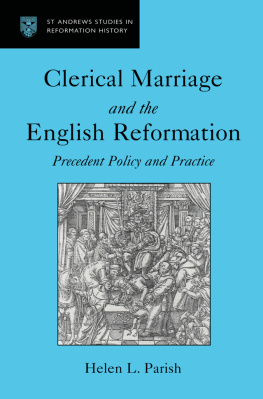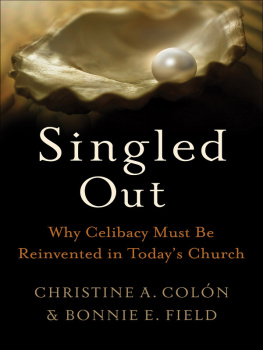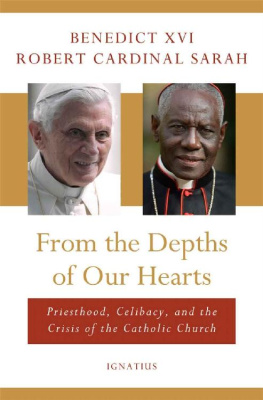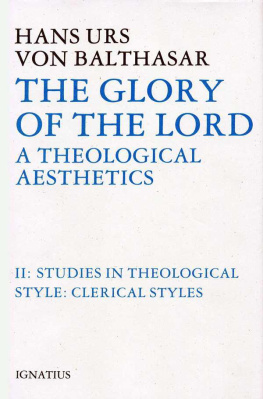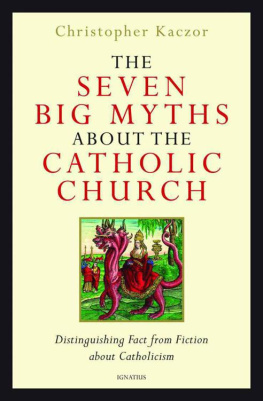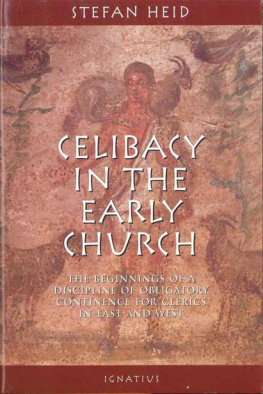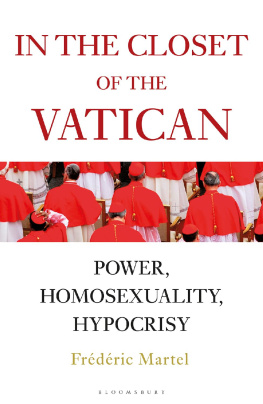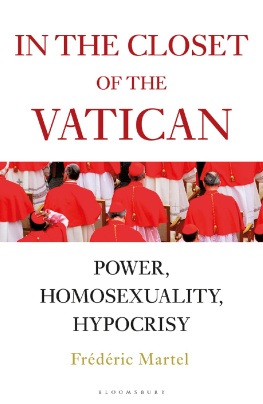THE CASE FOR CLERICAL CELIBACY
ALFONS MARIA CARDINAL STICKLER
THE CASE FOR
CLERICAL CELIBACY
Its Historical Development and
Theological Foundations
Translated by Father Brian Ferme
Foreword by Joseph D. Fessio, S.J.
Second Edition
IGNATIUS PRESS SAN FRANCISCO
Title of the German original:
Der Klerikerzlibat
Seine Entwicklungsgeschichte und seine theologischen Grundlagen 1993 Kral Verlag, Abensberg, Germany
Cover art:
Duccio di Buoninsegna
The Calling of the Apostles Peter and Andrew
13081311
Samuel H. Kress Collection
Courtesy of the National Gallery of Art, Washington, D.C.
Cover design by Roxanne Mei Lum
2019 by Ignatius Press, San Francisco
ISBN 978-1-62164-354-8 (PB)
ISBN 978-1-64229-096-7 (EB)
Library of Congress Control Number 2019945759
Printed in the United States of America
CONTENTS
FOREWORD
WHY SHOULDNT THE CHURCH allow married men to become priests, as she did in former times and as the Eastern Church does now? After all, its a matter of discipline, not doctrine.
Its a question that wont seem to go away. Fortunately, there is a good answer, and it isnt going away either. Youll find it succinctly and authoritatively expressed in this powerful little volume by Alfons Cardinal Stickler.
The subtitle summarizes what you will find in this book: Its Historical Development and Theological Foundations . And here are some of the surprising things you will discoverthough they are only surprising because of the widespread confusion surrounding this issue:
1. While many, if not most priests (and deacons and bishops) in the early Church were married, they were required to commit to continence, that is, not to have sexual relations with their wives. This was never an innovation, but the constant tradition from the time of the apostles.
2. All the documentary evidence we have supports this and there is no contrary evidence. There is, of course, evidence of human weakness and infidelity to this law of continence or celibacy.
3. The practice of the Eastern Church is the result of a historical mistake and forgery (the alleged but nonexistent presence of the monk-bishop Paphnutius at the Council of Nicaea and a forged statement attributed to him) as well as an intentional manipulation and falsification of texts (the Canons of the African Church).
4. Clerical celibacy is not merely disciplinary as, for example, Friday abstinence or the Sunday Mass obligation might be thought to be. (Even they are not merely disciplinary, but have theological foundations.) Christ is more than the model of the priestalthough that would be enough to underpin a celibate priesthood. Ordination configures the priest to Jesus Christ the Head and Spouse of the Church (John Paul II, Pastores dabo vobis ).
5. Deacons are clerics too. (That in itself is not surprising. But the application to them of the requirement of celibacy or at least sexual continence may seem so.)
Cardinal Stickler elaborates on all this and more with scholarly clarity and historical, textual evidence. We are grateful to him for his enlightening erudition and forthright presentation.
Joseph D. Fessio, S.J.
July 2, 2019
INTRODUCTION
IN THE ONGOING DISCUSSION on clerical celibacy in the Catholic Church, which in recent years has been markedly intensified, one regularly hears a variety of divergent opinions in both the Western and Eastern Churches, particularly with regard to its origins and development. These opinions range from, on the one hand, a belief in its divine origins to, on the other, the view that clerical celibacy is merely an ecclesiastical institution especially of the stricter discipline in the Latin Church. Those holding the latter view often say that the obligation to celibacy can first be verified from the fourth century, while others claim that celibacy was introduced only at the beginning of the second millennium, above all by the Second Lateran Council in 1139. These various opinions, marked both by their considerable divergence and by the various reasons put forward to support them, reflect a particular lack of certainty in our knowledge of the relevant facts, of the pertinent ecclesiastical regulations, and especially of the reasons for clerical celibacy. This uncertainty, as remarks on the subject show, extends into and up ecclesiastical circles.
In order to arrive at a correct understanding of this much-discussed institution, it is first of all necessary to clarify the pertinent facts and the regulations of the Church from the beginning until the present time and to explore the theological reasons for celibacy. This can only be done, of course, on the basis of a knowledge of the relevant sources and of current scholarship if our presentation is to be accepted as valid and scientifically credible. In recent years there have been a number of important studies devoted to the history of celibacy in both the East and the West, and this clearly has particular relevance to our study. These studies have either not yet penetrated the general consciousness or they have been hushed up if they were capable of influencing that consciousness in undesirable ways.
The present synthetic presentation will be accompanied by a scholarly apparatus which necessarily will have to limit itself to the essentials. Nevertheless, it will not only allow the possibility of examining more closely the various affirmations made but also will enable further detailed study.
In order to understand the historical development of celibacy in the Western and Eastern Churches, the present study will begin with an analysis of the actual concept of clerical celibacy which necessarily lies at the basis of the respective obligations that it imposes. In addition, in order that our conclusions be solidly founded, it will be necessary to provide an outline of the method which a proper treatment of this argument demands. The final part will be devoted to the theological foundations of clerical celibacy, which are demanded with ever-increasing urgency.
I
CONCEPT AND METHOD
1. THE FIRST AND MOST IMPORTANT PREREQUISITE for a knowledge of the historical development of any institution is the proper understanding of the meaning of the concepts on which it is based. For ecclesiastical celibacy, we have a particularly clear and concise reference in the writings of one of the greatest of the Decretistscommentators on Gratians Decretum who around 1140 collected and explained all the material concerning the juridical tradition of the first millennium of the Church. This Decretist is Huguccio of Pisa (d. 1210), who in his Summa on the Decretum , composed around 1190, began his treatment of celibacy with these words: In hac Distinctione incipit (Gratianus) tractare specialiter de continentia clericorum, scilicet quam debent observare in non contrahendo matrimonio et in non utendo contracto .
A reading of this text clearly indicates a double obligation with respect to celibacy: not to marry and, if previously married, not to use the rights of marriage. In addition, it is clear that even in this period, namely, the end of the twelfth century, there were clerics in major orders who had been married prior to ordination. In fact we know from the Scriptures that the ordination of married men was a normal enough event. Saint Paul, in writing to his disciples Titus and Timothy, prescribed that such candidates could be married only once.
Here we clearly already have the first obligation of clerical celibacy, namely, the commitment to continence in the use of marriage after ordination. The real meaning of celibacy, which today is in general almost totally forgotten but which in the first millennium and beyond was well known, consists in this: complete abstinence with respect to the procreation of children even within the context of marriage. In fact all the first laws written on celibacy speak of this prohibition, that is, of the further procreation of children, a point which will be convincingly documented in the second part of this study. This indicates that, despite the fact that many clerics were already married before their ordination, they were nevertheless held to this particular obligation before they could be ordained. In the beginning, the actual prohibition to marry remained somewhat in the background. It emerged only later when the Church imposed the prohibition against marriage on those celibates from whom virtually all the candidates for sacred orders were exclusively recruited.
Next page

